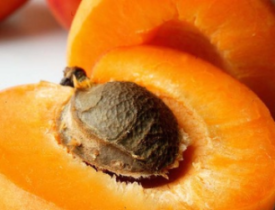Welcome
Welcome to HACCP Mentor Review. I am Amanda Evans and this episode we cover the use of social media in the food industry, tinned champignons, the hazards of raw apricot kernals and how you can define your food safety quality manual during an audit.
The Power of the Public
Unfavourable social media can be the undoing of a food business and can be compared on a level similar to a food recall. Your reputation can be damaged with customer loyalty disappearing over night. A recent viral video that came across my Facebook account was a great example of this. The video released showed a live rodent feeding on food products displayed in the showcase of a retail outlet located within an international airport terminal.
The video was very quickly removed with statements from the airport stating that the footage was not taken at the location shown within the video. For me, the video did not look doctored and appeared to be filmed by a customer. The name of the business via its shop signage was also shown within the video. Regardless of the truth, the damage has already been done. So….my question to you is…. do you have a social media policy and does it include how to handle such detrimental situations? Let me know your thoughts by leaving a comment below this post.
From the Vault
Keeping with this theme, the from the vault article is about staff sabotage. It gives a great example of how a large global food business dealt with a staff sabotage issue and the investigation they undertook to identify the culprit. You can check it out here
My introduction to food safety
Many people ask me what inspired me (or made me) go into the field of public health and food safety. It is rather bizarre, but I remember when I was very young, about 6 or 7 (years old) and hearing that there had been a food poisoning outbreak associated with tinned champignons in Asia. It was big news at the time (mid 1970’s) as there were many people who became ill and with some consumers also dying. I do remember thinking and trying to understand how that could possibly happen and what had gone wrong. I never found out, but it was enough to make me never want to eat this product again (and I still don’t). That one incident triggered my interest in food safety and helps me stay focused today on the goal of helping to protect the public’s health through food safety management and compliance.
Risk Assessment on Raw Apricot Kernals 
A risk assessment has been recently completed and released regarding raw apricot kernels. The risk relates to ‘Cyanogenic glycosides’. This chemical can be broken down after eating to release cyanide which could then pose a public health and safety risk to consumers. Take this opportunity to check your raw material risk assessments to see if this could be a potential hazard for your business. For more information on this risk assessment and advisory check out the Release of Cyanogenic Glycosides Survey.
Defining your Food Safety Quality Manual
As a food business, you get to decide how you are going to present your food safety quality manual to be audited. Some examples that I have seen during audits include:
- Separate policies, procedures, forms and documents all held on the company server (soft copy).
- Paper hard copies filed into individual folders eg. Pest control folder, cleaning folder, allergen management folder.
- A reference document which states the title of each of the relevant policies, work instructions, forms etc. This includes where the information can be found (either hard copy or electronic copy).
- Everything relating to the management of food safety and quality written a one manual (in one file – hard or soft copy).
When you see the requirement to document a food safety quality manual in any of your certification criteria / standards (eg BRC 3.1.1), the above examples is how you could evidence compliance to the auditor.
Share and Comment
That wraps up this episode of HACCP Mentor Review. Feel free to share with your network or pass this episode onto your colleagues. Don’t forget to leave a comment below to tell me how your food business deals with social media issues.



